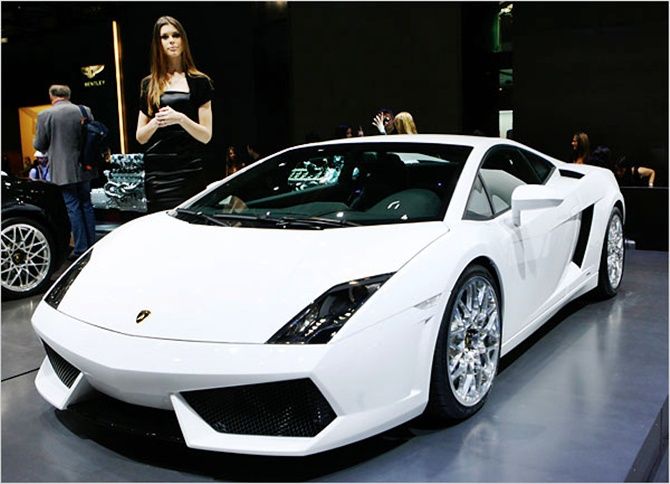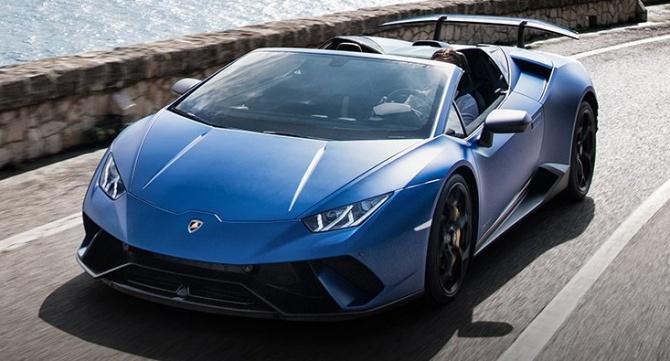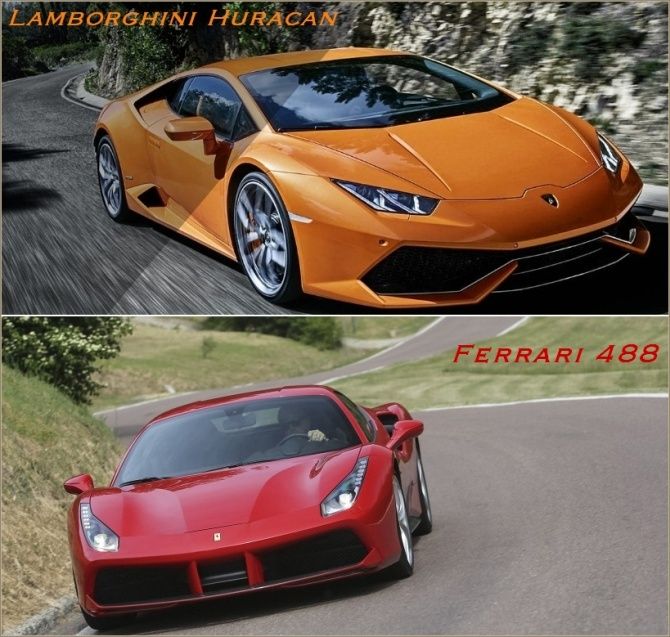 | « Back to article | Print this article |
Buoyed by the success in a tiny but exclusive market, Lamborghini India, which operates dealerships in Mumbai, New Delhi and Bengaluru, is going to roll out another two, in Kolkata and Chennai, in the near future.

Image: Lamborghini Gallardo. Photograph: Reuters
Ten years after Lamborghini started selling its flashy high-powered sports cars in India, the Volkswagen-owned brand sells the highest number of vehicles in the segment.
"We have 40 per cent market share of the exclusive super sports cars market," says Sharad Agarwal, country head for Lamborghini India.
Exclusive super sports cars is an industry term for cars with over 400 horsepower engines and a starting price of Rs 9 million.
The company, which operates dealerships in Mumbai, New Delhi and Bengaluru, is going to roll out another two, in Kolkata and Chennai, in the near future.
The move is mainly aimed at readying the network for servicing the Lamborghini Urus, which is all booked out until March 2019, Agarwal adds.
Overall, there are 200 Lamborghinis on Indian roads today, with rough estimates indicating 100-110 Ferraris.

Photographs: Kind courtesy Automobili Lamborghini
The entire size of the segment, which includes Aston Martins, Ferraris, Lamborghinis and Porsches, was 100 cars in 2011, and was growing until 2014, when volumes shrunk to 40 cars because of tax structures and economic headwinds. Customs duty went up from around 110 per cent in 2011 to over 173 per cent in 2013.
The segment then turned around in 2017, when volumes grew to over 70 units. The current customs duty levied on these cars is 110 per cent and the goods and services tax is 48 per cent.
So, what differentiates a Lamborghini from a Ferrari? Gautam Singhania, chairman of the Raymond Group, who owns cars from both the brands, says a Ferrari is mostly two-wheel drive, has upright seating positions, is refined, and offers a very smooth driving experience.
"The Lamborghini, on the other hand, is more radical design-wise, has raw power, is mostly four-wheel drive, has lower seating and, in general, is a harder car to drive."
He adds that most first-time sports car customers would opt for a Ferrari simply because it is so much better known across the world, while "Lamborghinis are for the hardcore".
Queries sent to Ferrari went unanswered.
On what could be driving Lamborghini's volumes, Singhania says one factor is exclusivity.
"I think Ferrari controls its supply more than Lamborghini. If you look at it across the world, their (Ferrari's) global demand is higher."

Photographs: Kind courtesy Automobili Lamborghini and Ferrari
In some measure, it's also pricing. The two-wheel drive Lamborghini Huracan retails for Rs 30.1 million, whereas an entry-level Ferrari such as the 488 starts at Rs 40 million.
The other, he says, could be because in the aftermarket sales, Ferraris hold their value considerably better than most other sports cars.
Jatin Ahuja, founder of Big Boy Toyz, a chain of car dealerships that also resells exotic cars, agrees. He says of the two brands, demand for a two-year-old Ferrari is higher than that of a two-year-old Lamborghini.
Besides Lamborghini's leading growth, India remains small and even incomparable to other markets such as Dubai or China. Constant changes in duty structures, Agarwal says, disrupt the manufacturers' sales plans. "The market should really have been at around 500 cars a year," he adds.
Infrastructure isn't optimum for fast cars, but culturally, much of the jet set is still very conservative.
One analyst says, "If you go by national wealth reports that track high net-worth individuals and their growth, there's no reason why the market can't surpass 1,000 cars a year."